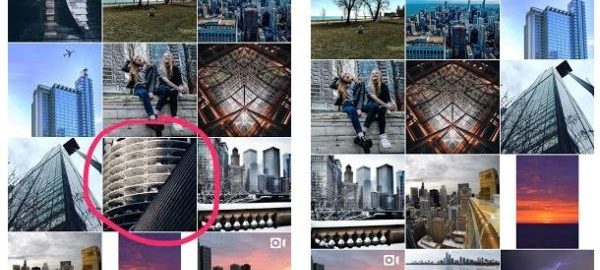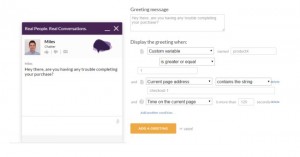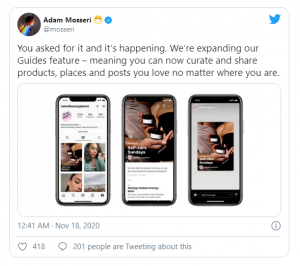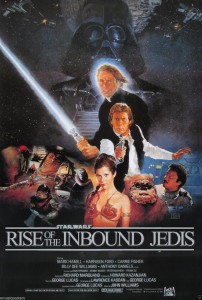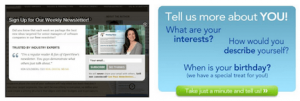The social media universe is complex, to say the least. As soon as you think you have it all figured out, new features, tools or regulations appear out of nowhere. This just recently happened to numerous users of Instagram: All of a sudden, mysterious hashtag errors occurred, as users reported. What initially only seemed to affect business profiles quickly spread out to regular users and is meanwhile known as shadow banning, stealth banning or ghost banning.
THE MYSTERIOUS HASHTAG ERROR
It all started a few month ago. Users began to complain about hashtags which did not work: They reported adding popular hashtags to a picture. The photo was visible on the hashtag page for the user who posted it and also for his or her followers, but unfortunately not for users who did not follow the channel.

Example of Shadow Banning. Left side: Viewed from the own channel. Right side: Viewed from another account which does not follow the channel. (Source: Petapixel)
At first, people suggested that only business accounts were affected but meanwhile, the hashtag curse has apparently spread out to regular profiles as well.
Some users claim that one will only be affected if hashtags are posted in the comments, but not if they are used in the post description. What we definitely know is that the ban oftentimes concerns popular, frequently used hashtags.
WHY DOES INSTAGRAM USE SHADOW BANNING?
First of all, we cannot precisely say if the recent shadow bans are actively executed by the platform itself. Instagram did, in fact, comment on the accusations but remained guarded over the causes of the hashtag errors:
It is no surprise that users hardly believe this version of the story. In fact, Instagram established some major changes in the past year which do not appeal to everyone, like the new algorithm which changed the order of posts in your feed. Also, compared to earlier days of the social network, Instagram meanwhile takes stronger action against scam, fake and infringement of its terms of use. For example, in September 2016, the platform deleted thousands of fake accounts, causing follower numbers to drop significantly for certain users.
And just last week, Instagram forced the automation tool Instagress to shut down its service because it violated Instagram’s terms of use:
You must not create accounts with the Service through unauthorized means, including but not limited to, by using an automated device, script, bot, spider, crawler or scraper.
A change in the visibility of posts that include certain hashtags might be another approach of Instagram to fight bots and automation tools.
WHAT CAUSES A SHADOW BAN?
During our research, we came across several theories of Instagram users trying to explain why people are being shadow banned. Here are the most common assumptions:
- use of certain hashtags
- binge liking
- fake followers
- use of automation tools
HASHTAGS
Obviously, Instagram tries to ban explicit content from the platform. This includes “violent, nude, partially nude, discriminatory, unlawful, infringing, hateful, pornographic or sexually suggestive photos or other content”. Instagram, therefore, completely censors certain hashtags that obviously violate its terms of use like #horny, #booty or #porn.
It is rather surprising that inoffensive hashtags like #elevator, #easter, #workflow and #kansas appear on the list of restricted hashtags as well. In fact, #kansas, #workflow and #beautyblogger currently display no results on Instagram.

Example of restricted hashtags
Lately, users report that other highly popular and frequently used hashtags have been shadow banned, too. Instagram seems to explicitly ban those hashtags that are used excessively and therefore oftentimes hit by bots and fake accounts. Furthermore, some users seem to have trouble when copy-pasting hashtags into their description instead of typing them in manually.
BINGE LIKING & FOLLOW-UNFOLLOW
Liking an excessive amount of pictures and following and unfollowing a lot in a short time period might cause Instagram to classify you as a bot. Instagram limits the actions users can take on the platform, including liking photos, leaving comments, following and unfollowing channels which is supposed to reduce spam. According to Jenn’s Trends, the allowed amount of likes per hour is limited to 350 and 160 follows/ unfollows allowed hourly. It is advisable though to not reach these limits as such a high number of likes and follows resembles bot-like behavior and might quickly attract Instagram’s attention.
FAKE FOLLOWERS
Obviously, purchasing followers does not sit well with Instagram. As mentioned before, the social network strongly proceeds against fake accounts and continues to delete them. Purchasing fake followers on a large-scale basis will draw attention to one’s channel, increasing the chances of shadow banning and an overall ban of your account.
AUTOMATION TOOLS
Automation tools like (formerly) Instagress and Mass Planner that help grow a following usually hit popular and frequently used hashtags. Shadow banning these hashtags could well be Instagram’s way of fighting automation on the platform, since these clearly violate Instagram’s terms of use.
HOW A SHADOW BAN AFFECTS YOUR ACCOUNT
Instagram does not notify users of having been banned. Users affected by a shadow ban report a noticeable decline in overall engagement and only followers keep engaging with the channel. If the content does not appear on certain hashtag pages, not yet following users who navigate via certain hashtags are not aware of the channel, thus do not engage and do not start to follow the channel, as this Instagram user reports:
Anyway, my posts are always at the same times that work for my audience and I didn’t change that. I usually range in the 185-400 likes and prior to that March 28 date, I had been getting 200-300 likes pretty steadily. But this photo tanked and all photos after it tanked. I noticed it took several minutes for likes to even come and I was barely clearing 100 likes in a day. I used to easily clear 100 likes in 60 minutes so something seemed odd- or my photos just really sucked! It just seemed like after 45-50 minutes, my posts would have zero or very little engagement. This is when the shadowban hysteria was going on. I switched tags, kept it to 29-30 and hoped things would go back to normal. They didn’t.
So eventually, the follower growth will slow down as well.
Overall, for those users navigating via hashtags, it might be harder to find your content. Furthermore, some influencers complain that brands will not become aware of their content if they cannot find it in the hashtag indexes and will not regramm the influencer’s content.
THE TAKEAWAY
We will see if Instagram finds a solution for what the platform calls “issues with [the] hashtag search” and if the alleged shadow ban will really be an error in the end. Several IT specialists have voiced that it might truly be just a temporary technical issue:

But even if the assumptions regarding causes of shadow banning are valid, the issue should be easily fixed by refraining from the use of automation tools and fake followers, as well as excessive activity.
Some users report that the problem did not reappear after they stayed away from their accounts for a while. Furthermore, users should not use restricted hashtags as well as very frequently used and popular ones.
The question is how frequently users really navigate via those hashtags to find new content. Although a lot of sources attest that hashtags will expose content to an extended audience, help building communities and are useful for brands, hashtags have to be very specific and cater to a niche topic. When using hashtags which are as unspecific and frequently used as #instamood, your content will get lost in the huge amount of posts anyways. So, when looking for a certain topic, users will probably not look up #instamood, but rather search for more specific hashtags – and these are probably not affected by shadow banning.
The issue is not only observed on Instagram – Twitter an Facebook users report similar problems regarding their post visibility.
_____________________________
Published originally on InfluencerDB | Influencer Marketing For Professionals
Digital & Social Articles on Business 2 Community(65)
